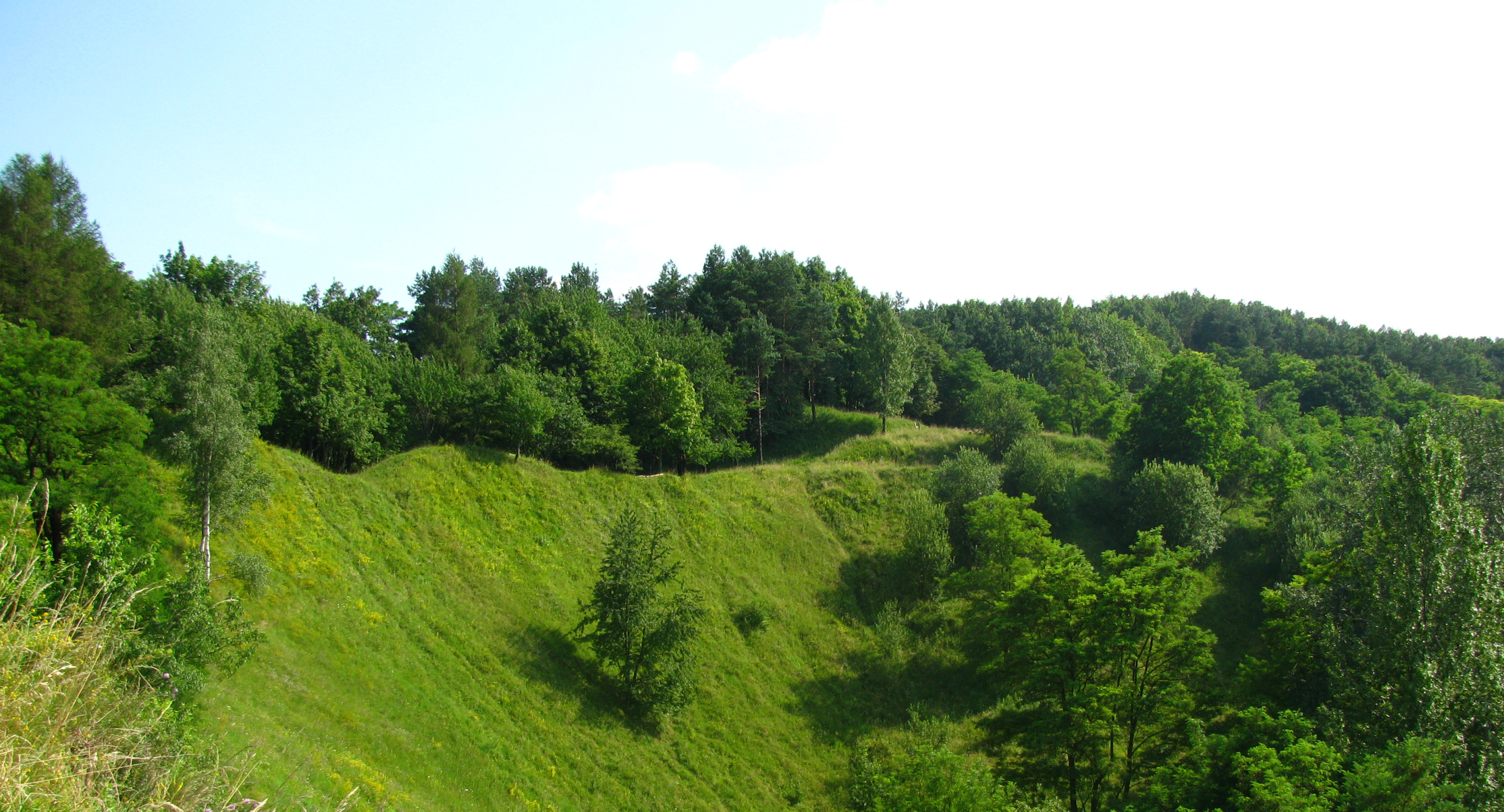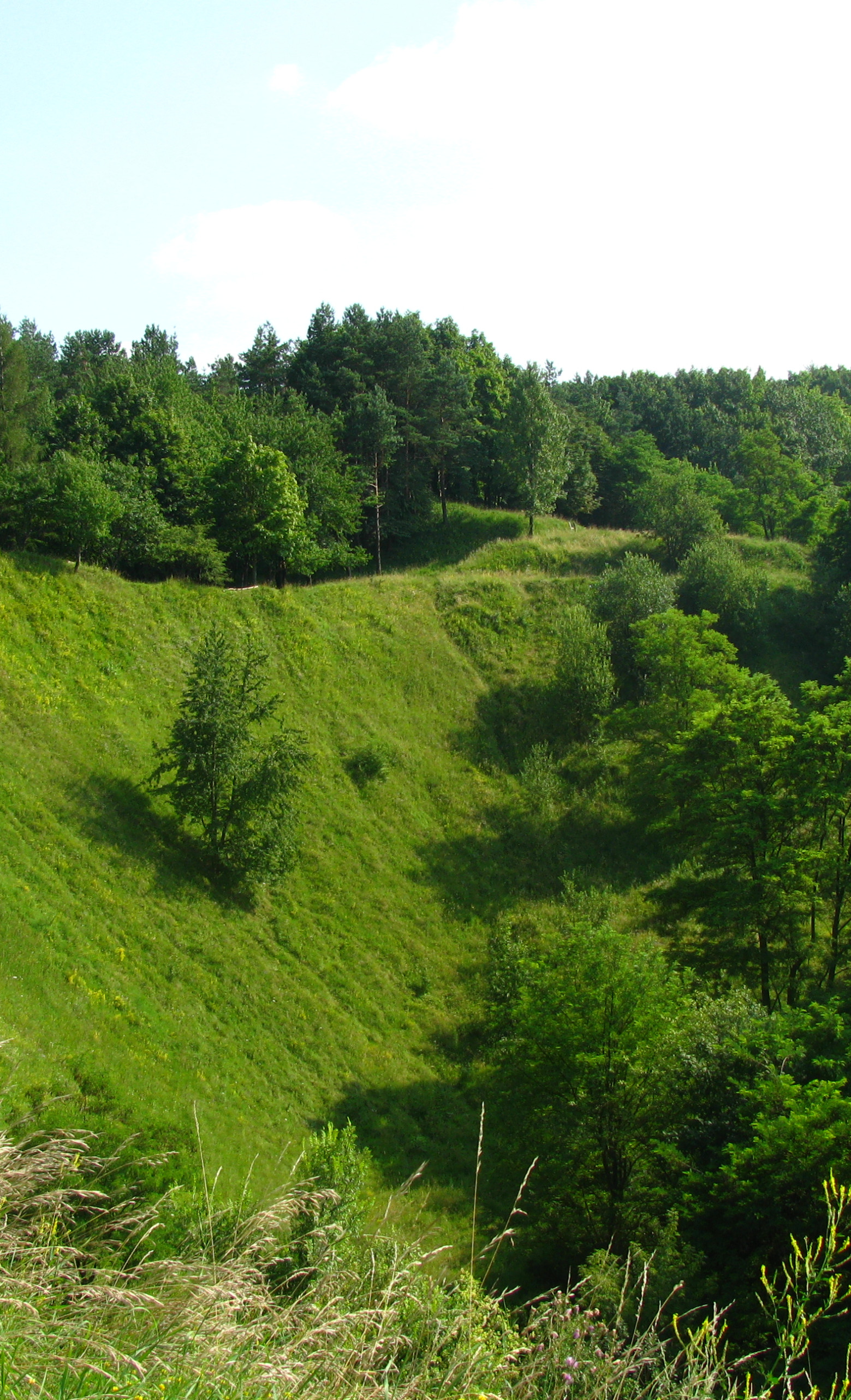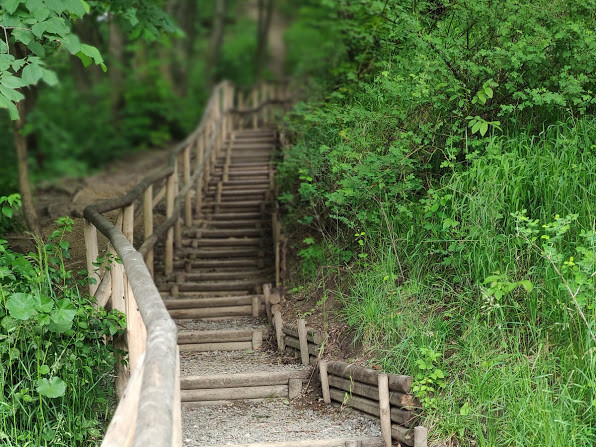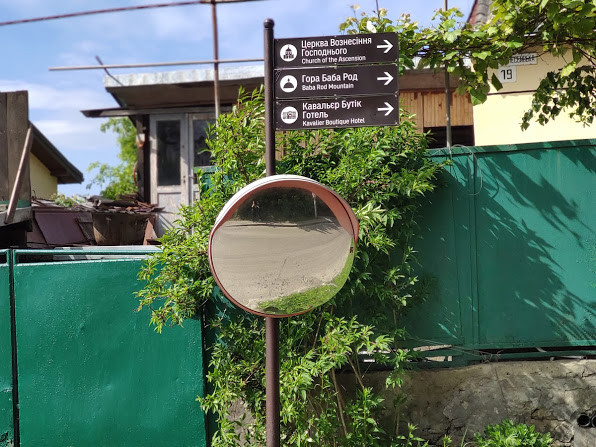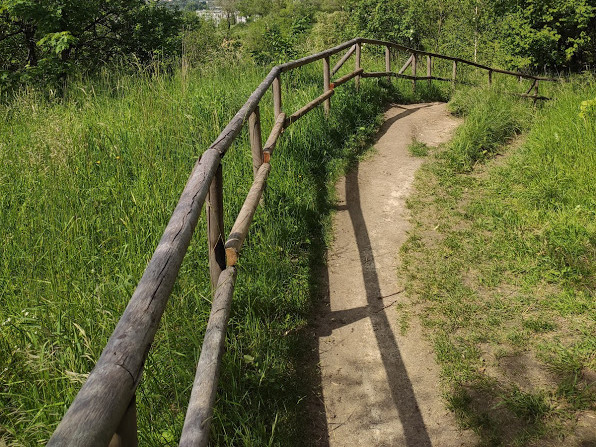The landscape of Lviv is hills, hills and once again hills, between which lies the city center. No matter which way a tourist goes, he or she will have to go up or down. Lviv hills are picturesque in their own way and hide many surprises. On some, more famous - the ruins of an ancient castle, monuments, on others - prestigious old villas. And all this beauty is sure to drown in greenery. Lviv is a very green city, a very “park” city, and Lviv residents like to relax near their homes in cozy cafes, pompous restaurants and, of course, courtyards and parks.
We would like to tell you about one such park, which in some places can already be called a forest, in our today's article.
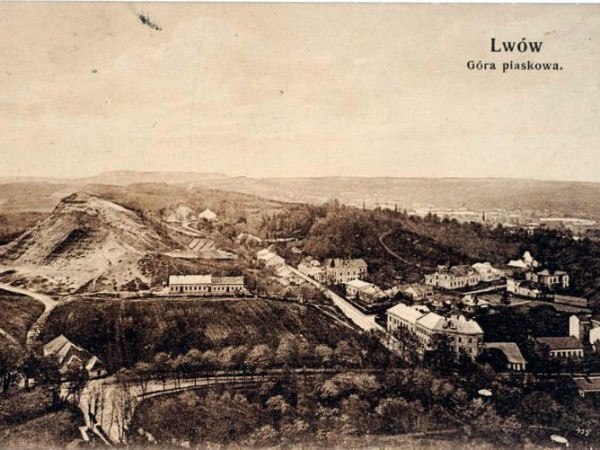
Regional Landscape Park “Znesinnya” or “Kaiserwald”
Znesinnya Park is better known to many Lviv residents by another name, so if you ask the locals about the road to the Museum of Architecture and Life, and the answer is: “To Shevchenkivsky haj? Up to Kaiserwald and then left "- do not be surprised. The Klimenty Sheptytsky Museum of Folk Architecture and Life in Lviv is better known to the people of Lviv as Shevchenkivskyi hai or Skansen, and Znesinnia Regional Landscape Park as Kaiserwald. Actually Kaiserwald - the previous name of the park, has its own and quite interesting history..
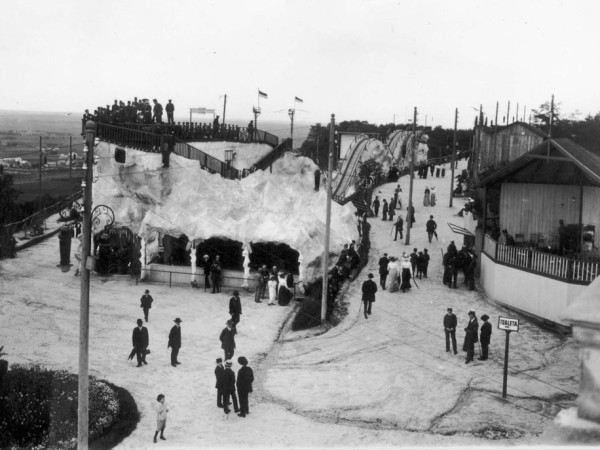
To understand where the park came from and what its history was, you need to know that Znesinnya is a hilly ridge that stretches from the High Castle to the village of Kryvchytsi, which includes the territory of Kaiserwald - divided between the Museum of Folk Architecture and Life in Lviv and Znesinnya Regional Landscape Park.
In the area behind Znesinnya Park there was once a village of the same name, which is now one of the agglomerations of Lviv. This area is interesting because in the IV-II centuries BC here was a Svitovydove field - a monument of the pre-Christian era. Also here and on Mount Baba Roth, ancient Slavic pagan temples were discovered, which are now visited by natives. These locations are considered “places of power”
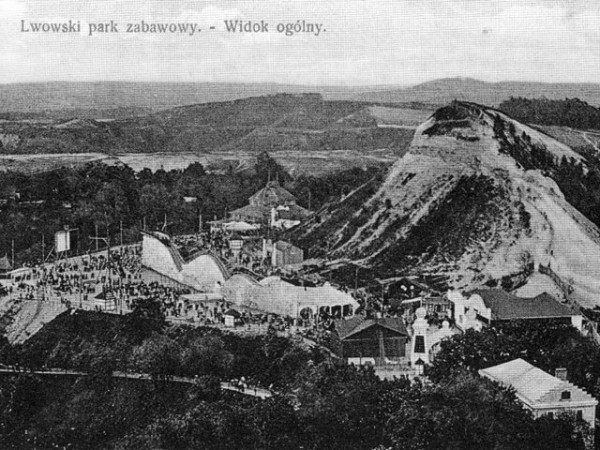
And here are often found fossil shells of mollusks, fossils of trees and unique specimens of forest and steppe flora - traces of several geological epochs.
Well-known Ukrainian historians Isidor Sharanevych and Ivan Vahylevych claimed that this was the settlement where Danylo Halytsky founded Lviv. Therefore, it is quite probable that the “first heart” of Lviv is located on the northern slopes of Lviv Plateau, where three settlements were practically located nearby.
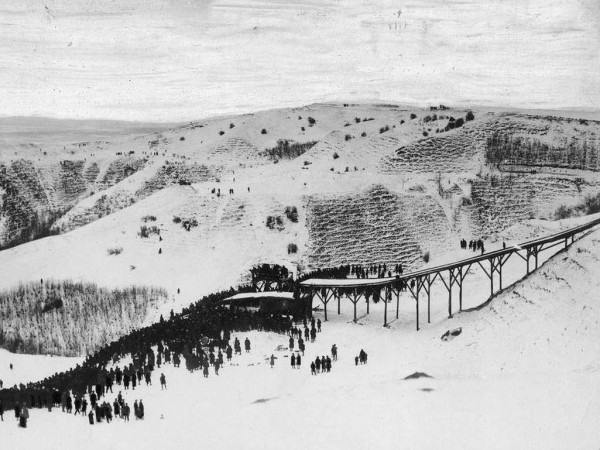
The park got its second name, namely “Kaiserwald” in the XVIII century. At that time, the hills of the park were owned by the Alambek family and the area was called “Alembekivska Pasika”. In the second half of the 18th century, these lands were bought by Lviv Mayor Franciszek Longchamp De Berie and built his estate here. During his visit to Lviv, Caiser Joseph II Habsburg - King of Germany stopped at this estate. The king liked the burgomaster's property so much that during his next visit he stopped again at the burgomaster's estate, and the park on the hills began to be called “Kaiserwald” (German: Kaiserwald), which literally means Imperial or Royal Forest.
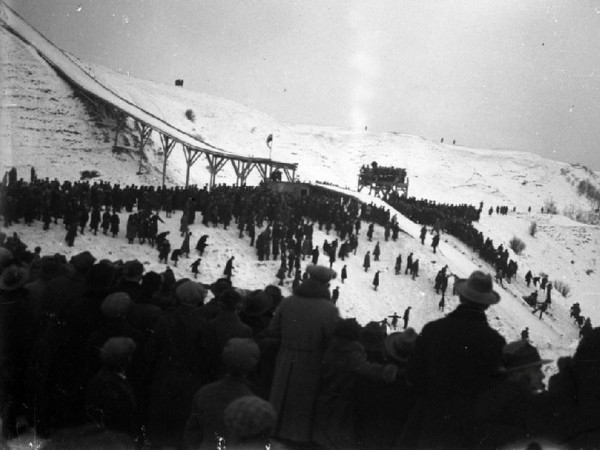
Since then, the improvement of the park has begun. In 1908, the first amusement park in Ukraine was opened in its eastern part, designed by English architects Thomas McDowell and Arthur Leverak, the park had attractions, a three-story restaurant and a summer playground. However, it operated only until 1914. After the end of the First World War in 1926, a ski jump began to operate on the hills. The height of the wooden scaffolding was 8 meters, the run to the jump was 76 meters. At the time of construction, it was considered one of the most beautiful in Poland.
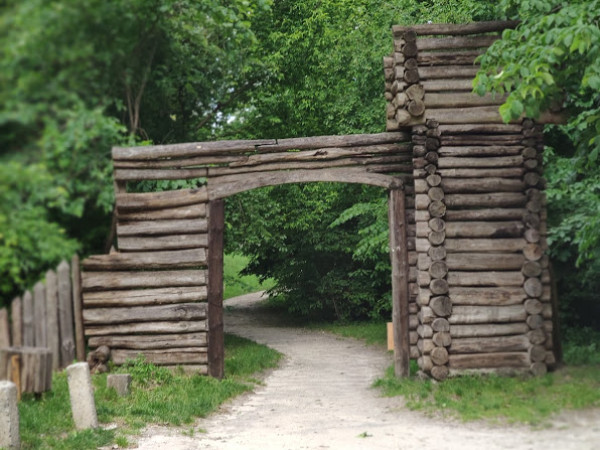
The village of Znesinnya, which by the way got its name from the Church of the Ascension built in 1901, and Kaiserwald Park were annexed to Lviv during the German occupation. Thus, in 1943, they were annexed to the “First Precinct” or the City of Stadtmitt. The territory of the village of Znesinnya is still known for the fact that here in October 1648 the Cossack system under the leadership of Maxim Kryvonis stormed the High Castle. The village developed as a cultural center: schools were opened, organizations were created and churches and monasteries were built. Here was a famous quarry from which at the end of the XVII century were removed more than 800 carts of stone, from which arose the Church of the Assumption, the Stauropean printing house and the monastery of St. Onuphriy. In 1914, the Ukrainian military “Sichovi Cossaks” performed demonstration battles here for the first time, and in 1918 they died in this landmark territory together with UGA soldiers in the battle against Polish formations. Today, the only intact mass grave of the USS-UGA is preserved in the Znesinnya cemetery.
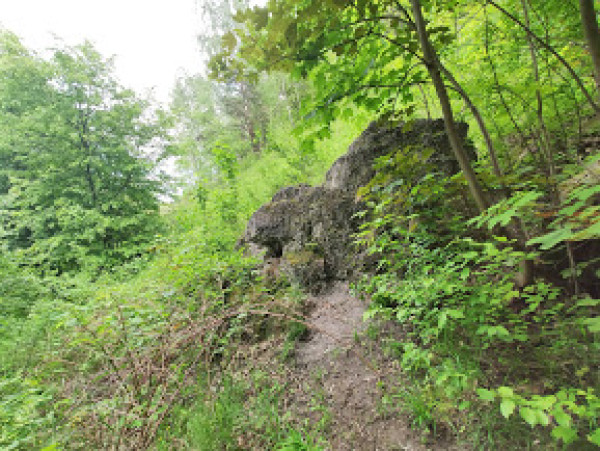
The idea to turn Kaiserwald into a landscape park arose in the early 1960s. It was planned to create recreation areas, a singing field, a museum of folk architecture, a ski jump and a bobsled track. They also wanted to erect a majestic and monumental monument to Taras Shevchenko. In 1966, as part of this project, the Museum of Folk Architecture and Life was opened, which in 2016 was named after Blessed Clement Sheptytsky and is a popular tourist location today.
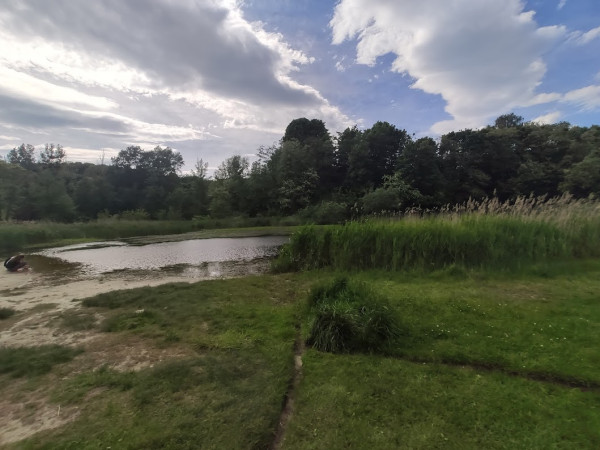
Znesinnya - a fairly young park. Despite all the ideas, the park was founded in 1991 on the public initiative of Lviv.
The park itself has an area of 312.1 hectares, but to regulate the impact of the urban environment and the formation of a single natural and architectural ensemble of the park and surrounding areas allocated a protection zone of 473.61 hectares. The total area of the park together with the protection zone is 785.71 hectares.
The relief is represented by Lviv hills: Stefana, Lva (Lysa or Pischana), Baba (Rid), Khomets. The park is located near the main European watershed that separates the Baltic and Black Seas. Deep and Kryvchytskyi streams flow in the park, Khomets stream (all streams are tributaries of Poltva). In the territory you can see rare steppe plants, outcrops of sandstones and limestones of the Miocene with fossilized remains of marine fauna, forested hills, a lake in the valley.
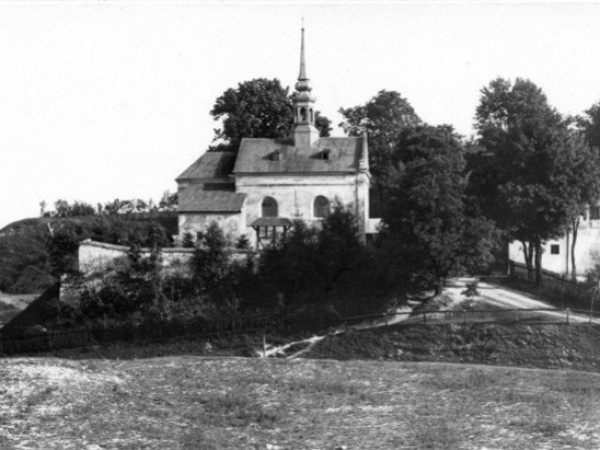
As the park has historically been part of the suburban village of Znesinnya, there are residential buildings, the Church of the Ascension of the Lord and St. Elijah, the former Church of St. Wojcieh, the old Znesinnya Cemetery, the pharmaceutical factory "Halychpharm" and a glass factory. On the territory of the park there is also the foundation of the old defensive tower of the XIII-XIV centuries, ski slopes. The territory of the park belongs to the category of lands of nature protection, health-improving, recreational and historical-cultural purpose.
The territory of Znesinnya is constantly evolving and improving. Along with the Museum of Architecture and Life, the construction of a modern educational and information center and parking lot is underway.
The park has many interesting locations that are a must visit. We would like to tell you about them separately.
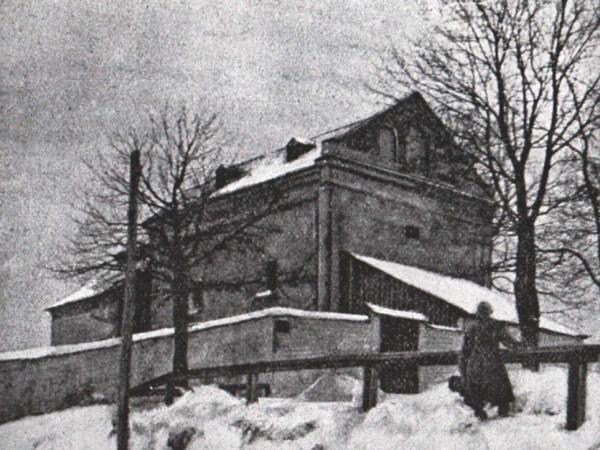
Church of the Holy Martyr Jehoshaphat and all Ukrainian martyrs
Probably the first thing you will see on the approaches to Kaiserwald from the center will be the Church of the Holy Martyr Jehoshaphat,
The Church of St. Wojciech was built in 1607 on the northern slope of Zmiyeva mountain. Initially, there was a small cemetery for children who died of cholera. A temple was later built at the expense of the locals. In 1702 the wooden house next to the church was replaced by a new stone one. It is believed that the Swedish King Charles XII stayed in the monastery during the siege of Lviv. In 1749, the Missionary Fathers settled at the church, who founded a bursa and trained clergymen to enter the theological seminary. In 1769, the monastery was probably handed over to the Theatines, a male priestly order of the Roman Catholic Church, founded by St. Caetano Tiensky.
In the 1780s by the Austrian authorities, the monastery was abolished, and the church was closed and turned into a powder magazine. in 1897 the church was returned to the community and repaired. The monastery has a scholarship for students of the Latin seminary. During the First World War, the church was closed, and instead there were powder depots of the Austrian army. After the Second World War, with the arrival of Soviet power in Lviv, a military unit was located in the church. In 1993 the church was transferred to the Congregation of Miles Jesus (Army of Christ), and in 1996 it was consecrated as the Greek Catholic Church of the Holy Martyr Jehoshaphat and all Ukrainian martyrs.
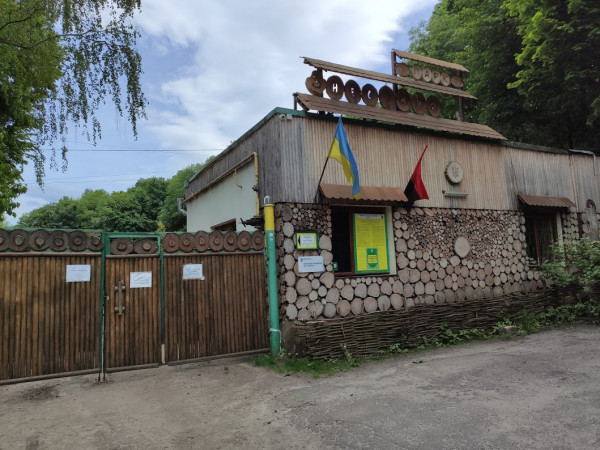
How to get there: The temple is located at 24 Dovbusha Street. From the center, you need to go up Maksyma Kryvonosa Street, turn to Dovbusha Street - the building will be at the end on the left side.
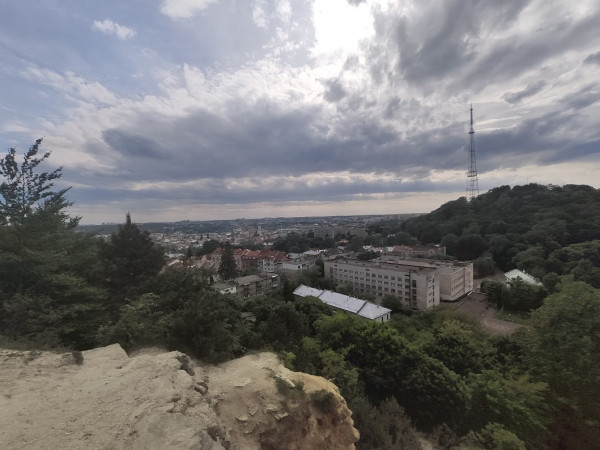
Home of Rescued Animals
“Home of rescued animals” - is not a zoo in the classical sense of the word. It is rather a real home for animals that have been mocked or abandoned by their owners. The home was established 2 years ago, and functions as the zoological department of Znesinnya Park. Funds for the construction of cages and food come from the city and volunteers. At first, there were few animals, but now there are more than a hundred - rescued birds, raccoons, foxes, wolves, abandoned pets, farm and wild animals. Entrance to the territory of the home is free, but here they will be happy for any help - financial or material. However, when visiting with children, we recommend using antiseptics - due to lack of funding and staff in the shelter is not the best sanitary conditions.
How to get there: The home is just behind Jehoshaphat's Church
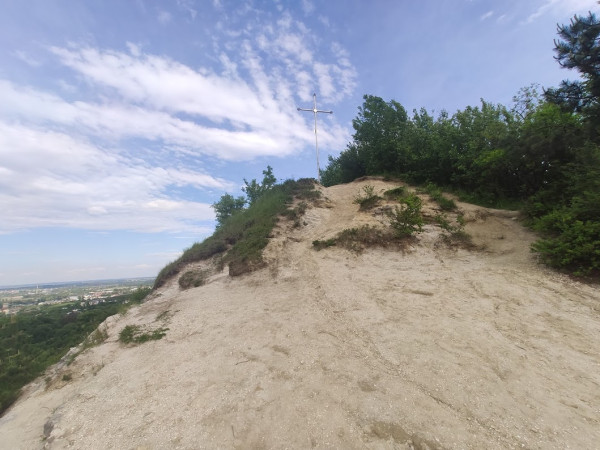
Mount of Lion (Bald Mount)
Mount of Lion is one of the highest points in the city, a beautiful observation deck, a natural monument, and a place with a rather eerie history.
The history of the mountain dates back to the 14th century when the second castle-palace of King Lev Halytsky was located on the mountain. In 1340, during the attack on the city of Poles, the castle of King Lev was destroyed, but it was not rebuilt. For many years, the mountain was completely devastated, which is why it began to be called Bald Mountain, and it was also called: Sand, Calvary, Stephen. The last name was given by Lviv burghers in the XV-XVII centuries. The height of the Mountain of Lion is 389 meters, it stands out against its neighbors and is second only to the Castle Hill.
Most of the hill consists of sandstone and sand. At the end of the 17th century, sand and stone were actively mined here for the construction of townhouses on the newly formed streets, which in turn significantly reduced its size. Thanks to the protests of historian Isidor Sharanevich, the quarry, and quarry on this mountain were liquidated. For many Lviv residents, for centuries the Lion Mountain has been the Witch's Mountain, a cursed place where evil spirits gather at midnight on the Sabbath. There are many legends about unfortunate deaths that happened here and ghosts that can be seen. It is also rumored that the demon fell in love with the mountain after the installation of a wooden cross here.
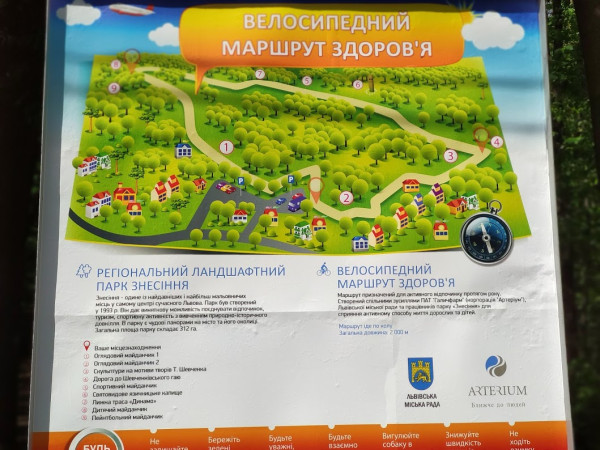
In fact, Bald Mountain is a wonderful observation deck, which offers a beautiful panorama of the city and especially of the sunset and sunrise. The ascent from Dovbusha Street is gentle and well-arranged, while from the Castle Hill it is steep and even dangerous.
How to get there: at the end of Dovbusha Street, turn left and follow the path up.
From the side of the Castle Hill you need to take the path located at the beginning of Opryshkivska Street and go up.
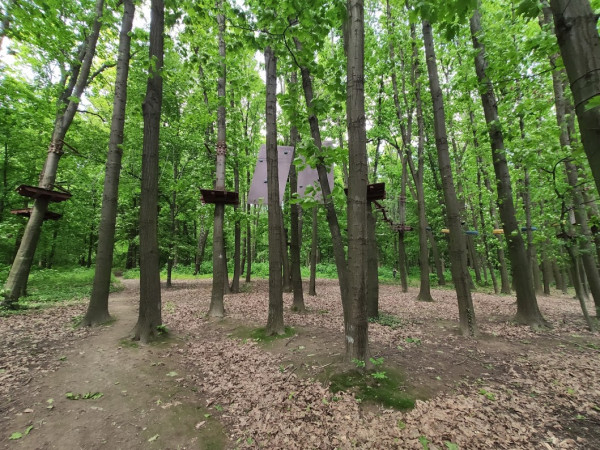
Health trail
Rather, not the location, but the route - is designed to encourage the public to health and environmental measures. Opened on October 10, 2019. The route runs along Dovbusha Street, despite the Home of Rescued Animals and the information center of Znesinnia Park - through the main alley (there is a “stop” on the health trail - a sports ground equipped with the necessary equipment and information boards), then at the entrance to the museum down to Lychakivska Street. There are signposts and opportunities for cyclists throughout the trail.
The health trail can be recommended primarily to people who lead an active lifestyle, as well as to visitors with children and those who want to meet Kaiserwald, but do not delve into it.
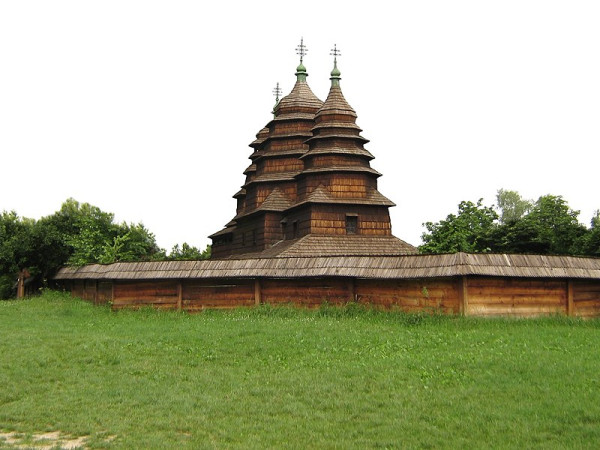
“Lazanka” Rope Park
On the main alley of the park there is another sports attraction, which promotes primarily family and corporate recreation - rope park “Lazanka”. For visitors here are “Children's”, “Medium”, and “Extreme” lines, which differ in complexity and height above the ground, so this entertainment will be interesting for both children and adults. There are also 2 Zip-Lines (high-speed rope descents) for children and adults.
Opening hours: daily during the summer from 10:00 to 20:00.
How to get there - from Lychakivska Street up Krupyarska Street to the car entrance to the park - then along the main alley to the left - the rope park will be on the right side.

Perhaps the most famous museum in Lviv, Lviv Skansen, the venue of dozens of festivals. Every Lviv resident knows about this museum and almost every tourist plans to visit it. We will not talk long about its history, let's just say that the museum on the Kaiserwald was opened in 1971. The idea of its creation belongs to the famous Ukrainian scientist Hilarion Sventsitskyi, who in the late 20s of the XX century began work on creating an open-air museum, and on December 1, 2016 the Museum of Folk Architecture and Life in Lviv was named after Blessed Klymenty Sheptytskyi. It should be noted that the popular name “Shevchenkivskyi Gai” was never official. Today the museum is actively developing. A new information center, parking lots and pedestrian communications are under construction.
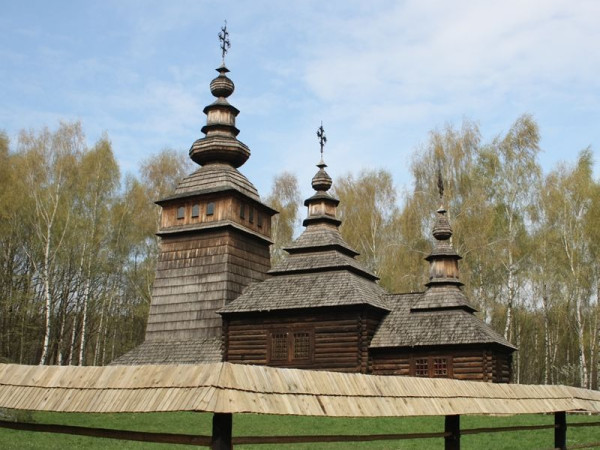
The exposition of the museum includes 124 architectural monuments, which are united in 54 estates. The Museum has 4 exhibition halls. Two of them have a permanent exhibition. The permanent exposition and repositories of the museum contain about 20 thousand items of everyday life and applied arts.
The territory of the museum with an area of 36 hectares is conditionally divided into six ethnographic zones. Each zone is a mini-village consisting of 15-20 monuments of folk architecture. Everyday household items, agricultural equipment, vehicles and handicraft tools are housed in residential and commercial premises. Six such mini-villages have names: “Boykivshchyna”, “Lemkivshchyna”, “Hutsulshchyna”, “Bukovyna”, “Podillya” and “Lvivshchyna“. (Regions of the west of Ukraine)
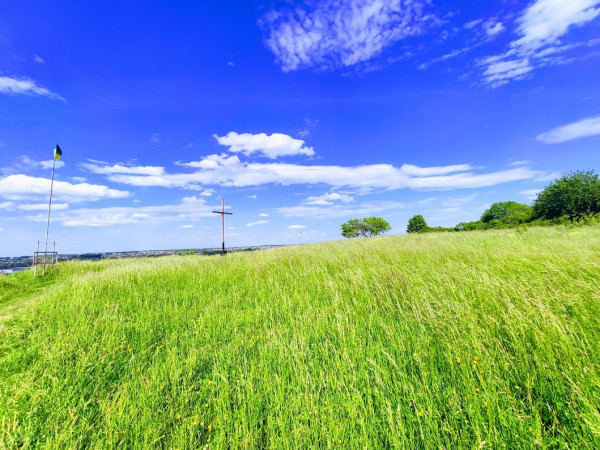
Of the more than 120 architectural monuments from the western regions of Ukraine, 6 are wooden churches. The oldest exhibit is a peasant house from 1749. There is also a smithy, a school, a sawmill, a loom, a water mill and a windmill. The museum also has a small animal house where you can go horseback riding.
Opening hours: daily during the summer from 10:00 to 20:00.
How to get there - from Lychakivska Street up Krupyarska Street to the car entrance to the park - then turn right along the main alley - the park will be at the end of the alley.
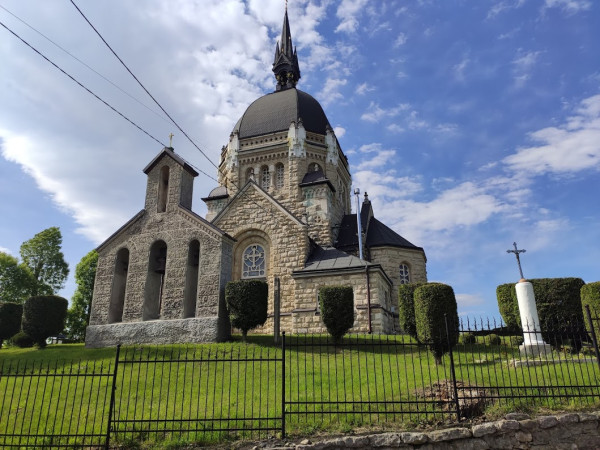
Somewhat in the back of the park there is an ancient place of strength, a mountain, 294 meters high and just a good observation deck “Baba Rod”
The ancient Slavic temple of Roda and Rozhanytsya and the ancient settlement between the present-day Staroznesenska, Poliova and railway tracks once stood here. In Christian times, the Church of the Ascension was built nearby - a Christian analogue of the cult of eternal life. The hill on which the church now stands was called “Baba” (Grandmother) in ancient times, meaning a figure of a stone statue in the form of a woman, and on the next - the same figure, but “Dido” (Grandfather).
Today, Baba Rod Mountain is a place of rites and rituals, as well as recreation and walks of the local population. Many tourists stay here even with tents.
How to get there - from the city center up Maksyma Kryvonosa Street, then down Opryshkivska Street to the right and further along Staroznesenska Street to the sign.
Church of the Ascension
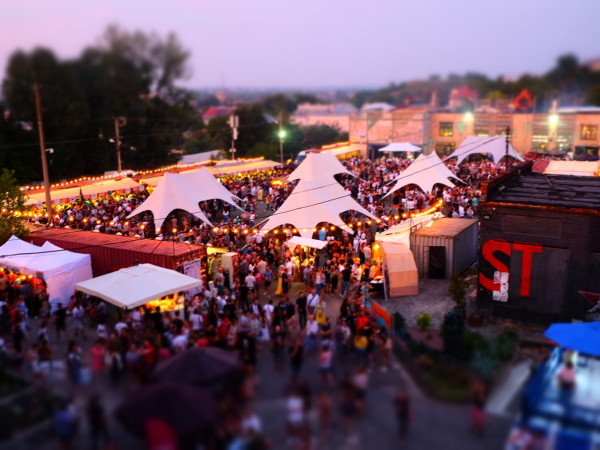
Probably a church was built on the site of the ancient sanctuary on Znesinnya behind the High Castle, from which the settlement got its name. The oldest known building of the church was erected in 1602 and it burned down during the siege of Lviv. Of the oldest documents concerning the church, only two documents from 1687 and 1758 are currently known, or rather a confirmation of its privileges and the appointment of new priests. The rebuilt wooden church stood until 1901, when a modern brick church was built in its place. It is known about the plans of 1888 for the construction of a new church designed by Vasyl Nagirnyi. For unknown reasons, this did not happen. The new project was executed by Vladislav Halytskyi and implemented during 1897-1901. The old church was not destroyed immediately. It was gradually built with new walls and dismantled after construction was completed. In 1922, an arrow-shaped neo-Gothic arch was built above the entrance to the churchyard, and later in 1924, a two-tiered wall belfry with semicircular arched openings for bells was built. The temple is located on a high hill. The plan has the shape of a cross with weakly pronounced shoulders. It is topped by one large octagon with a dome covered with tin and a high tin signature, with which the total height reaches 31 ethers. The material was a brick, externally bricked with coarsely worked sandstone mined nearby.
How to get - from the city center up the street Maksyma Kryvonosa, then down the street Opryshkivska to the right and then down the street Staroznesenska. The church will appear before the eyes on the left.
!FESTREPUBLIC
One of the most popular festival locations in Lviv, as well as open space, concert halls, bakery, offices, production facilities, restaurants - it all combines! FESTREPUBLIC. The location appeared in 2015, when the! FEST network bought the local “Halychsklo” plant, which turned into ruin after ten years of inactivity. Initially, the area was considered only as office space, but over time, a nightclub opened, and later the outdoor area was put in order, so today we can say that today! The location has a unique design, it is constantly updated and developed, so it is a must for all fans of parties and festival life.
How to get there - from the city center up Maksyma Kryvonosa Street, then down Opryshkivska Street to the right and further down Staroznesenska Street, when you see the pipe of the former plant, it will be! FESTREPUBLIC.
